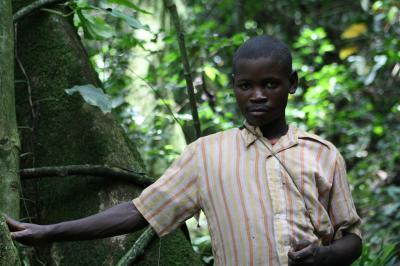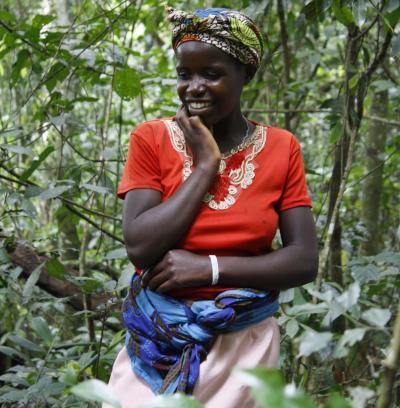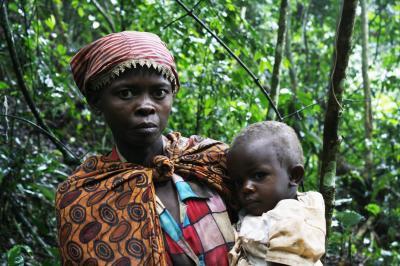The small body size associated with the African pygmy phenotype is probably a selective adaptation for rainforest hunter-gatherers, according to a new study, but since all African pygmy phenotypes do not have the same genetic underpinning it is likely a more recent adaptation than previously thought, according to a new paper in the Proceedings of the National Academies of Science.
A phenotype is the outward expression of genetic makeup and while two individuals with the same phenotype may look alike, their genes may differ substantially. The pygmy phenotype exists in many parts of Africa, Southeast Asia, the Philippines and perhaps South America and is usually associated with rainforest hunter-gathers rather than people who farm.
The study looked at the genetics of the Batwa rainforest hunter-gatherers of Uganda and compared them to their farming neighbors, the Bakiga, with whom they traditionally traded forest products for grain, and sometimes intermarry. The researchers also looked at the Baka rainforest hunter-gatherers and their farming neighbors the Nzebi/Nzime in central Africa.

A Batwa young man in Bwindi Impenetrable Forest National Park, Uganda. Credit: George Perry, Penn State
The average height for Batwa men is five foot and for women it is four foot eight inches. Their short stature is not caused by a single genetic mutation as occurs in many forms of dwarfism, but is the result of a variety of genetic changes throughout the genome that influence height.
The researchers investigated 16 different genetic locations that were associated with short stature when they looked at individuals who were an admixture of Batwa and Bakiga. Several of these regions contained genes known to be involved with growth in humans. They then studied these regions to look for indications that the changes were ones that persisted because they were adaptive.
Genetic mutations occur in populations all the time. If they have a negative impact on the individual, they tend to disappear from the population quickly. If they have no noticeable impact for the good or bad, they might disappear as well, although more slowly. Mutations which have positive influence on individuals, making them more fit for their environment, tend to spread through the population.
Short stature may be adaptive for rainforest individuals for a variety of reasons, according to Perry. Small bodies require less food, which is adaptive for a food-limited location like the rainforest. Small bodies also generate less heat, which, in the heat and humidity of the rainforest, is adaptive. It is also easier for small, agile individuals to move through dense undergrowth and to climb trees.
The results of the genetic comparison indicated that there was a statistical difference between the two groups indicative of multi gene adaptation.

A Batwa woman in Bwindi Impenetrable Forest National Park, Uganda. Credit: George Perry, Penn State
However, when they looked at the Baka of West Africa, they did not find the same types of changes in the 16 genetic locations.
"What we think we see is that regions of the genome that are involved in the Batwa's Pygmy phenotype do not look the same in West Africa," said George H. Perry, assistant professor of anthropology and biology at Penn State. "If the Pygmy phenotype were really old, then we would have expected the locations to be similar."
The fact that they are not, suggests that both of these Pygmy phenotypes arose independently, separated geographically, with different underlying genetics, but with individuals who look similar. This leaves the door open for a much later development of the Pygmy phenotype adaptation.

A Batwa woman and her child in Bwindi Impenetrable Forest National Park, Uganda. Credit: George Perry





Comments